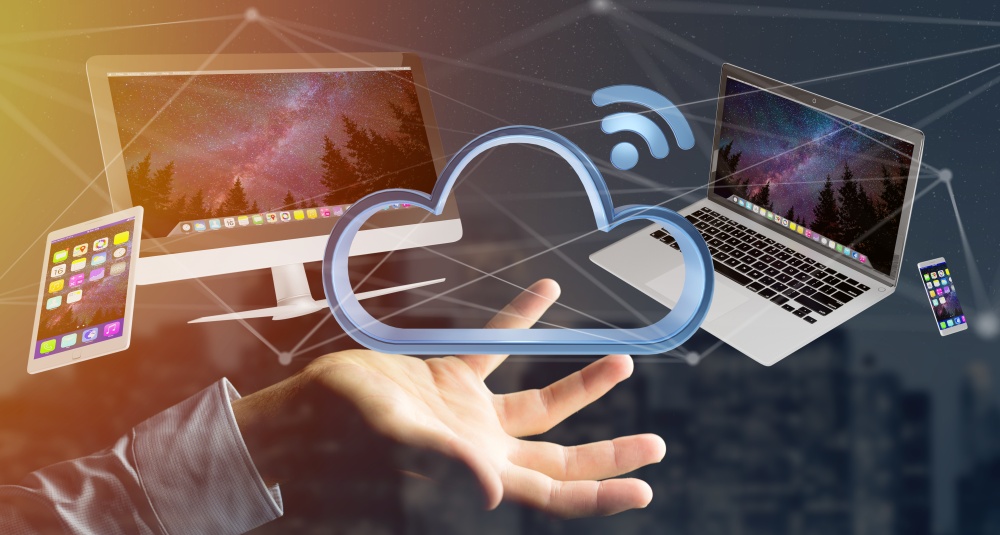Virtual PBX Featured Article
The Office: A Remote Working Special

To Maintain Productivity When Working Remotely, Communication is Key
The Office has been off air since 2013, but we can’t help but wonder how Dunder Mifflin employees would navigate present-day life. Would Michael spend more time switching up his Teams background than managing his actual team? Would Angela turn up in a hazmat suit? How would one of television’s most dysfunctional work families stay connected and keep sales alive while working remotely? Let’s look at how Dunder Mifflin could survive in today’s era of remote and hybrid work.
The Office taught us many lessons about the importance of company culture — but not so much about how to effectively run a business. Fortunately, for Dunder Mifflin, the team didn’t have to handle a pandemic. But, could the chaos presented in TV hit be sustained in the new hybrid and remote era of working?
Remote working has become the new normal for companies across the globe, and it’s here to stay. The BBC reported that almost all 50 of the UK's biggest employers said they do not plan to bring staff back to the office full-time, with many small and medium enterprises following suit.
Like an episode of The Office, introducing remote working during the pandemic was chaotic as many firms scrambled to get their communications infrastructure into place. Now, those wanting to adopt long-term remote working require more sophisticated technologies to ensure its success.
Keeping things productive
The first challenge Dunder Mifflin — and any company adopting long-term remote working — faces is keeping staff productive. With employees dispersed, measuring productivity is no longer as straightforward, and businesses need tools in place to measure and track performance. For workers in sales roles, like those in call centers, tracking productivity wherever employees are based is key.
A fully integrated platform that analyzes data allows businesses to monitor their key performance indicators (KPIs). For example, those operating call centers need to track metrics such as queue time, average call duration and the percentage of calls answered.
Using a dashboard to collect data will enable businesses to export reports about productivity that can be reviewed, organized and acted on accordingly. So, if a remote team member is failing to get through to customers or make any sales, they can receive the necessary support.
The future is VoIP
Remote working is not the only challenge The Office would face in 2021. Ensuring an acceptable quantity of good work is one thing, but quality communication is also vital. The next biggest communication challenge to hit businesses is the switch off of the Public Switched Telephone Network (PSTN), which will take place in December 2025.
The switch off has been influenced by greater digitalisation of telephony, which goes hand-in-hand with remote and hybrid working. It’s also where Voice over Internet Protocol (VoIP) comes in. VoIP phone systems transmit voice calls over the Internet, rather than phone lines, which improves quality and responsiveness of phone calls, and reduces costs by up to 50 percent.
Traditional telephones rely on analoge lines to carry voice signals, which requires physical installation before calls can be placed. This is costly and time consuming — not to mention unfeasible for remote working.
Up in the Clouds
Supporting the transition to VoIP requires a Cloud-based communications system, such as a cloud private branch exchange (PBX). Currently, PBXs connect internal phone extensions to the public switched telephone network (PSTN), which won’t be possible after 2025. However, managing a VoIP system using a cloud PBX eliminates the need to maintain a traditional on-premises PBX system, so everything is handled digitally.
Switching to a cloud-based business phone system doesn’t require downtime for installation and can be set up by any authorized staff member.
In addition, using the cloud means a phone system can be accessed from anywhere in the world, allowing businesses to expand remote working internationally and add new lines without the need for new equipment.
If The Office was based in 2021, there’s a lot Dunder Mifflin would have had to do differently. However, with a fully integrated telephony system, Michael and the team could keep on selling paper — in between searching for novelty video backgrounds.

About the author: Douglas Mulvihill is the marketing manager for Cloud communications software provider, Ringover. He has ten years of marketing experience for a range of fast-moving consumer goods (FMCG) brands. As the UK marketing manager, Douglas oversees Ringover’s marketing operations, which involves aiding the brands expansion in the UK, growing brand awareness and ultimately helping to drive global growth.
Edited by Erik Linask
SHARE THIS ARTICLE
HOME
Key Benefits
Unlimited Calling & Faxing
Number Portability
Auto Attendant
Voicemail-to-Email
Instant Conference Calls
HD Voice Quality
LEARN MORE